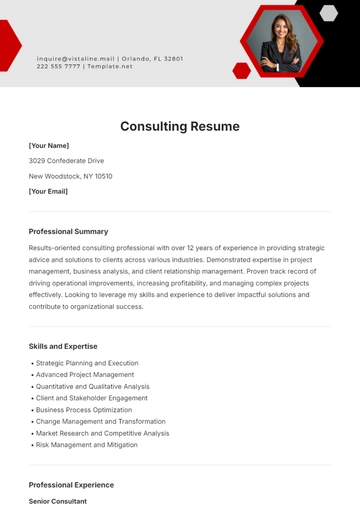Free Law Firm Continuity Planning Guide

I. Introduction to Continuity Planning
Every law firm faces unique challenges and potential threats that can disrupt its operations. To safeguard against these disruptions, the Law Firm Continuity Planning Guide is designed to strengthen your firm’s stability and resilience. This guide will walk you through a series of comprehensive steps tailored specifically for the legal sector, including risk assessment, development of continuity strategies, crisis management, and recovery processes. By adhering to these guidelines, your firm can maintain operational continuity in the face of unforeseen circumstances.
Continuity planning is not merely about crisis management; it is a strategic imperative that ensures your law firm can continue to serve clients effectively, even during significant disruptions. This guide emphasizes the importance of preparing for both likely and unlikely events, from technological failures to natural disasters. You will learn how to identify critical business functions and the resources necessary to sustain them, crafting a robust framework that supports your firm’s long-term goals.
As we delve deeper into the specifics of continuity planning, this guide will provide detailed instructions on forming a dedicated continuity team, conducting thorough risk assessments, and formulating actionable plans that align with legal and ethical standards. Through methodical preparation and regular updates to your continuity plan, your firm will not only minimize the impact of disruptions but also enhance its capacity to recover swiftly and efficiently, thus preserving the trust and confidence of your clients.
II. Risk Identification and Assessment
Identifying and assessing risks is a critical initial step in crafting an effective continuity plan for your law firm. This phase involves a thorough evaluation of potential threats that could impact your operations. Key areas of risk include natural disasters (e.g., floods, earthquakes, hurricanes), cyber-attacks that jeopardize sensitive data, the unexpected loss of key personnel, technology failures that impede access to digital resources, and risks associated with legal industry-specific regulations and compliance. To ensure a comprehensive understanding of these risks, it is essential to involve various departments within your firm in the assessment process.
Here is a comprehensive table outlining the steps to conduct a robust risk assessment:
Step | Description | Details |
|---|---|---|
1. Create a Risk Assessment Team | Form a team from diverse departments. | Include IT, human resources, legal, and executive management to cover all aspects of the firm’s operations. |
2. Inventory Assets and Resources | List and categorize critical assets. | Classify assets based on their importance and vulnerability, such as legal documents, client information, IT infrastructure, etc. |
3. Identify Potential Threats | Determine threats for each asset category. | Consider both internal and external sources of threats, including natural events, cyber incidents, and operational disruptions. |
4. Evaluate Risk Likelihood and Impact | Assess the probability and consequences of each risk. | Use a rating system to determine the severity and likelihood of risks impacting the firm’s continuity. |
5. Document and Review | Maintain records and update assessments regularly. | Keep detailed documentation of risk assessments and review them annually or after any significant operational or environmental change. |
By engaging all departments in this systematic process, you ensure that no potential risk is overlooked, and you foster a culture of preparedness across the firm. This collective approach to risk assessment helps in the development of more effective and comprehensive continuity strategies, ensuring the resilience of your law firm against a multitude of threats.
III. Continuity Strategy Development
After identifying the various risks your law firm might face, the next crucial step is to develop strategies to mitigate these risks, ensuring the continuity of critical functions. This involves crafting specific plans for each key area, addressing how to maintain operations seamlessly during disruptions. Below is a comprehensive table outlining the strategies for each critical function within the firm:
Function | Strategy | Details |
|---|---|---|
Data Management | Implement automated backups and secure cloud storage solutions | Automate data backups to occur at regular intervals, ensuring data is stored in multiple, secure cloud locations to prevent data loss. |
Remote Operations | Develop policies and infrastructure to enable effective remote work | Establish VPN access, secure remote desktop services, and guidelines for remote work to ensure operational integrity from any location. |
Client Communication | Establish redundant communication channels including email, phone, and secure messaging platforms | Create a multi-channel communication plan that includes redundancy to maintain client contact under any circumstances. |
Document Accessibility | Ensure legal documents can be accessed securely from various locations | Implement document management systems that provide secure, role-based access to documents from multiple locations. |
Emergency Response | Prepare physical and technological infrastructures for quick response to immediate threats | Develop and train a response team, equip with emergency supplies, and ensure IT systems can be quickly restored or accessed remotely. |
By methodically addressing each critical function with a targeted strategy, your law firm can ensure that it not only responds effectively to crises but also maintains uninterrupted service to clients. This strategic preparation allows the firm to adapt swiftly and competently, preserving the trust and continuity so crucial to legal operations.
IV. Crisis Management and Emergency Procedures
Effective crisis management is essential for minimizing the impact of unexpected events on your law firm. This phase involves establishing a clear framework for handling crises, which includes a series of actionable elements designed to prepare and guide the firm through emergencies. Below is a detailed table outlining key components of an effective crisis management plan:
Element | Strategy | Details |
|---|---|---|
Chain of Command | Establish a clear chain of command and specify roles for crisis response | Define roles and responsibilities clearly for each team member during a crisis, ensuring everyone knows their tasks and reporting structure. |
Communication Plans | Create communication plans detailing internal and external information dissemination | Develop protocols for communicating with employees, clients, and the public. Include backup communication tools and templates for messages. |
Employee Training | Train employees on their roles during various crisis scenarios | Regularly conduct training sessions to familiarize staff with their roles in different types of emergencies, including drills and simulations. |
Evacuation or Lockdown Procedures | Establish evacuation or lockdown procedures | Outline specific steps for safe evacuation or lockdown, including routes, assembly points, and procedures for assisting those with disabilities. |
Coordination with Authorities | Coordinate with local authorities and emergency services when necessary | Set up pre-established contacts and collaboration plans with local emergency services, police, fire departments, and hospitals. |
By incorporating these elements into your crisis management and emergency procedures, your law firm can effectively reduce disruptions, safeguard personnel, and maintain critical operations under adverse conditions. This comprehensive approach ensures a coordinated and swift response to emergencies, thereby preserving your firm's integrity and client service continuity.
V. Training, Testing, and Plan Updates
For a continuity plan to be effective, it must not only be current but also well-practiced by all members of the firm. This involves a rigorous schedule of training, testing, and regular updates to ensure readiness under various emergency scenarios. Below is a detailed table outlining the strategies for maintaining an effective continuity plan:
Practice | Strategy | Details |
|---|---|---|
Annual Training Sessions | Conduct annual training sessions for all employees | Provide comprehensive training to all staff members on the latest continuity practices and procedures each year to ensure firm-wide competence. |
Regular Drills | Execute regular drills simulating different types of emergencies | Organize frequent emergency drills to simulate various scenarios, helping employees practice their roles and refine their response strategies. |
Plan Reviews and Updates | Review and update the plan following any incident, regulatory change, or significant operational change | Systematically evaluate and modify the continuity plan to reflect lessons learned from drills, actual incidents, and changes in legal requirements. |
Feedback Mechanisms | Implement feedback mechanisms to improve procedures based on drill outcomes and real-event responses | Establish channels for employees to provide feedback on drills and actual emergencies to continually refine and enhance response strategies. |
Cross-training of Employees | Cross-train employees to ensure multiple individuals can perform critical functions | Develop a program where employees are trained in multiple roles, enhancing flexibility and ensuring that critical functions are always covered. |
Implementing these practices ensures that the continuity plan remains dynamic and effective, capable of adapting to new challenges and ensuring the firm's resilience. This proactive approach not only prepares the firm for handling unforeseen events but also strengthens overall operational capabilities.
VI. Recovery and Learning from Incidents
The ultimate objective of continuity planning extends beyond merely coping with emergencies; it aims to adapt and refine future preparedness based on past experiences. Following any disruption, a structured recovery process is critical to capture lessons learned and to implement enhancements in the continuity plan. Below is a detailed table outlining the key actions in the recovery phase:
Action | Strategy | Details |
|---|---|---|
Evaluate Incident Response | Evaluate what was effective and what failed during the incident | Conduct a thorough assessment of how the continuity plan held up during the incident, noting both strengths and areas for improvement. |
Adjust Continuity Plan | Adjust the continuity plan based on these findings | Update the continuity plan to incorporate lessons learned, ensuring that successful strategies are emphasized and failures are addressed. |
Assess Damages | Assess financial damages and operational delays | Evaluate the financial impact and operational setbacks caused by the incident to prioritize recovery efforts and resource allocation. |
Plan for Normal Operations | Plan for the return to normal operations with improvements | Develop a strategy to resume normal operations, incorporating improvements based on the incident’s review to strengthen future resilience. |
Document the Incident | Document the incident for future reference and learning | Create a detailed report of the incident, including the sequence of events, response effectiveness, and the recovery process for future review. |
Implementing this structured recovery process ensures that your law firm not only bounces back from disruptions but also becomes more robust and better prepared for future challenges. This continuous improvement cycle is crucial for maintaining resilience and enhancing the overall effectiveness of your firm’s continuity planning efforts.
- 100% Customizable, free editor
- Access 1 Million+ Templates, photo’s & graphics
- Download or share as a template
- Click and replace photos, graphics, text, backgrounds
- Resize, crop, AI write & more
- Access advanced editor
Discover Template.net's Law Firm Continuity Planning Guide Template. This essential resource is fully editable and customizable, specifically designed to tailor-fit your individual needs. It is uniquely editable in our Ai Editor Tool to ensure simplicity and efficiency. Elevate your law firm's strategic planning with our user-friendly tools and enjoy the seamless process our professional templates offer.





























